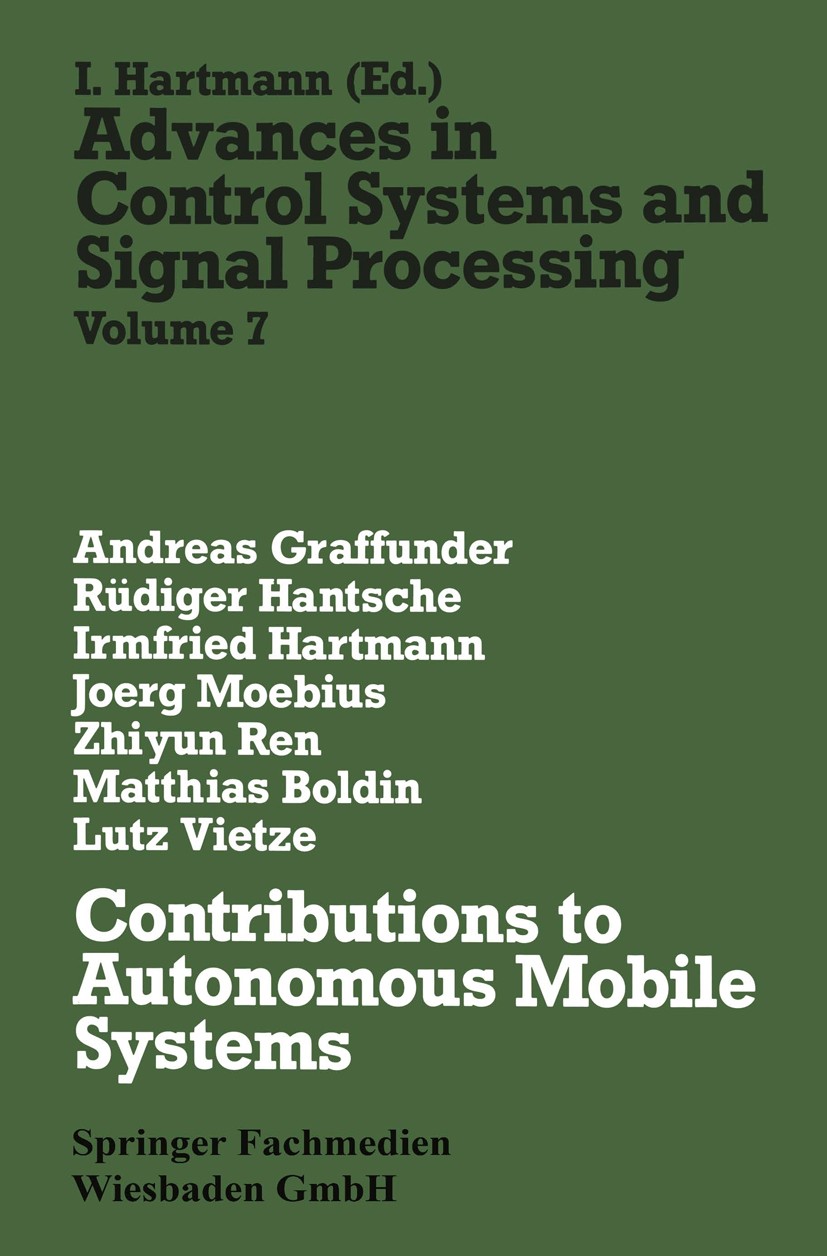| 书目名称 | Contributions to Autonomous Mobile Systems | | 编辑 | Andreas Graffunder,Rüdiger Hantsche,Lutz Vietze | | 视频video | http://file.papertrans.cn/238/237178/237178.mp4 | | 丛书名称 | Advances in Control Systems and Signal Processing | | 图书封面 |  | | 描述 | Autonomous mobile systems (AMS) are systems capable of some mobility and equipped with advanced sensor devices in order to flexibly respond to changing environmental situations, thus achieving some degree of autonomy. The purpose of this book is to contribute to some essential topics in this broad research area related to sensing and control, but not to present a complete design of an AMS. Subjects conceming knowledge based control and decision, such as moving around obstacles, task planning and diagnosis are left for future publications in this series. Research in the area of AMS has grown rapidly during the last decade, see e.g. [WAXMAN et al. 87], [DICKMANNS , ZAPP 87]. The requirements of an AMS strongly depends on the desired tasks the system should execute, its operational environment and the expected speed of the AMS. For instance, road vehicles obtain velocities of 10 m/s and more, therefore the processing of sensor data such as video image sequences has to be very fast and simple, while indoor mobile robots deal with shorter distances and lower speeds, thus more sophistcated techniques are applicable and -as is done in our approach- additional sensors can be integrated to | | 出版日期 | Book 1992 | | 关键词 | algorithms; detection; image processing | | 版次 | 1 | | doi | https://doi.org/10.1007/978-3-663-06842-6 | | isbn_softcover | 978-3-528-06383-2 | | isbn_ebook | 978-3-663-06842-6 | | copyright | Springer Fachmedien Wiesbaden 1992 |
The information of publication is updating

|
|
 |Archiver|手机版|小黑屋|
派博传思国际
( 京公网安备110108008328)
GMT+8, 2025-11-12 15:13
|Archiver|手机版|小黑屋|
派博传思国际
( 京公网安备110108008328)
GMT+8, 2025-11-12 15:13


